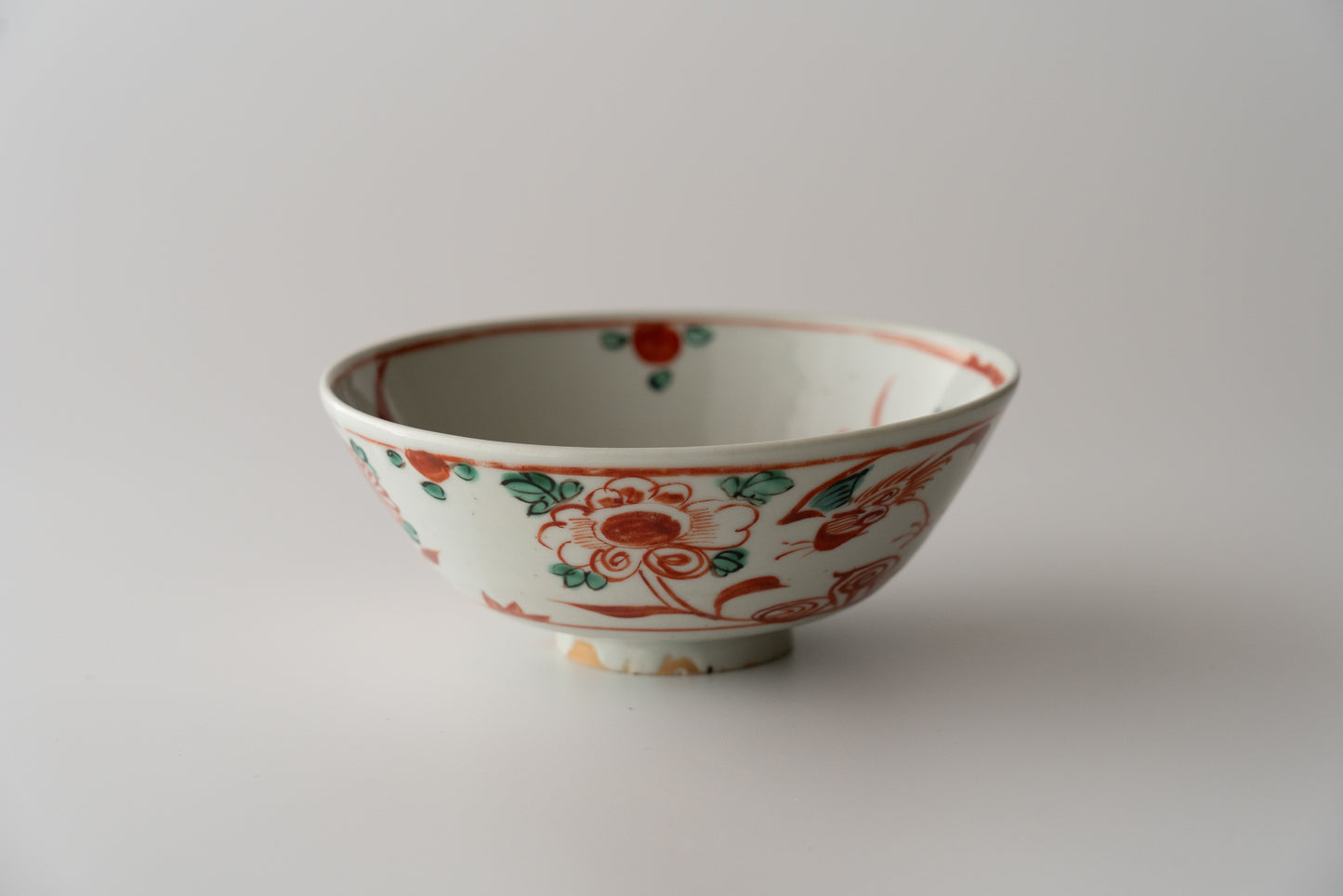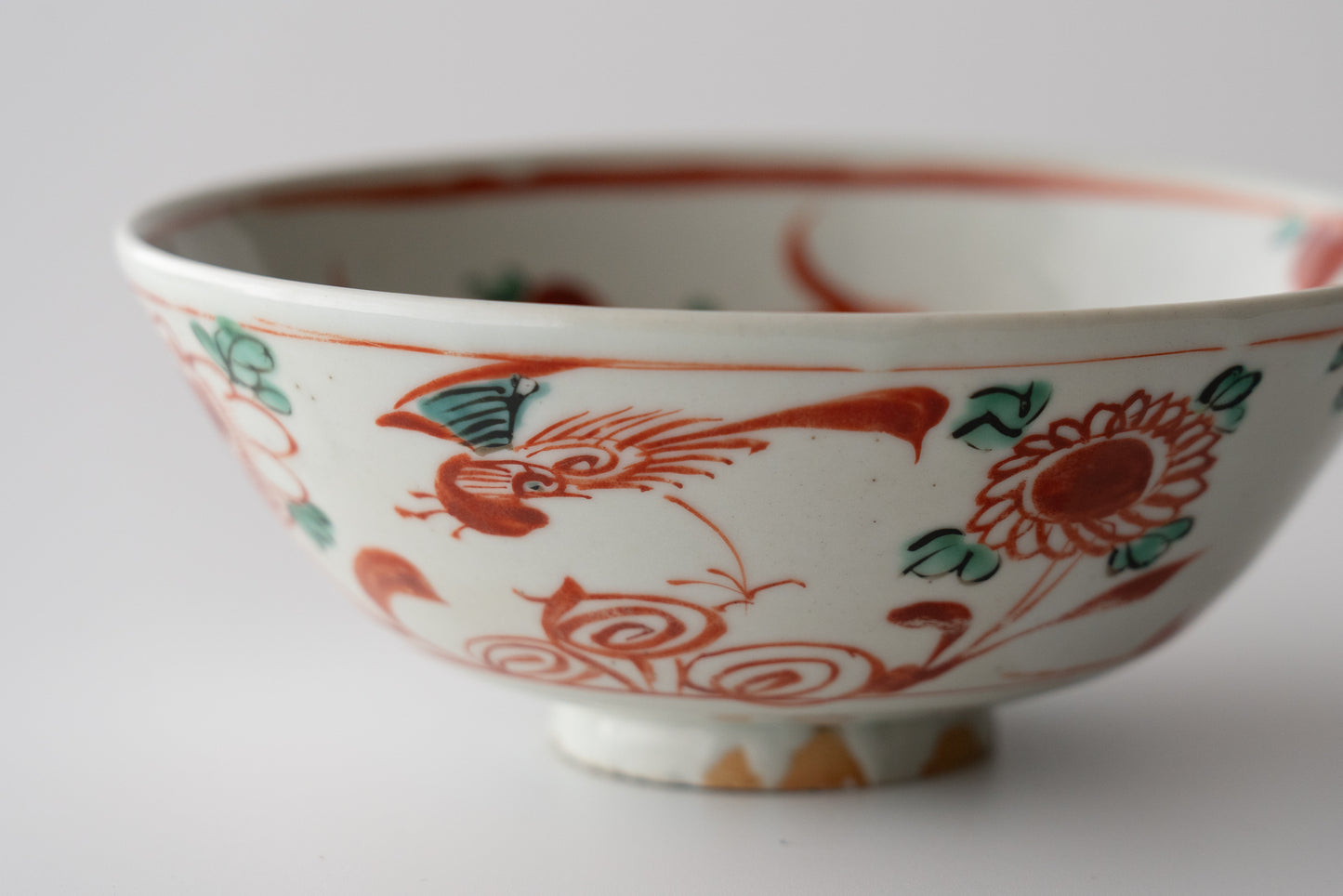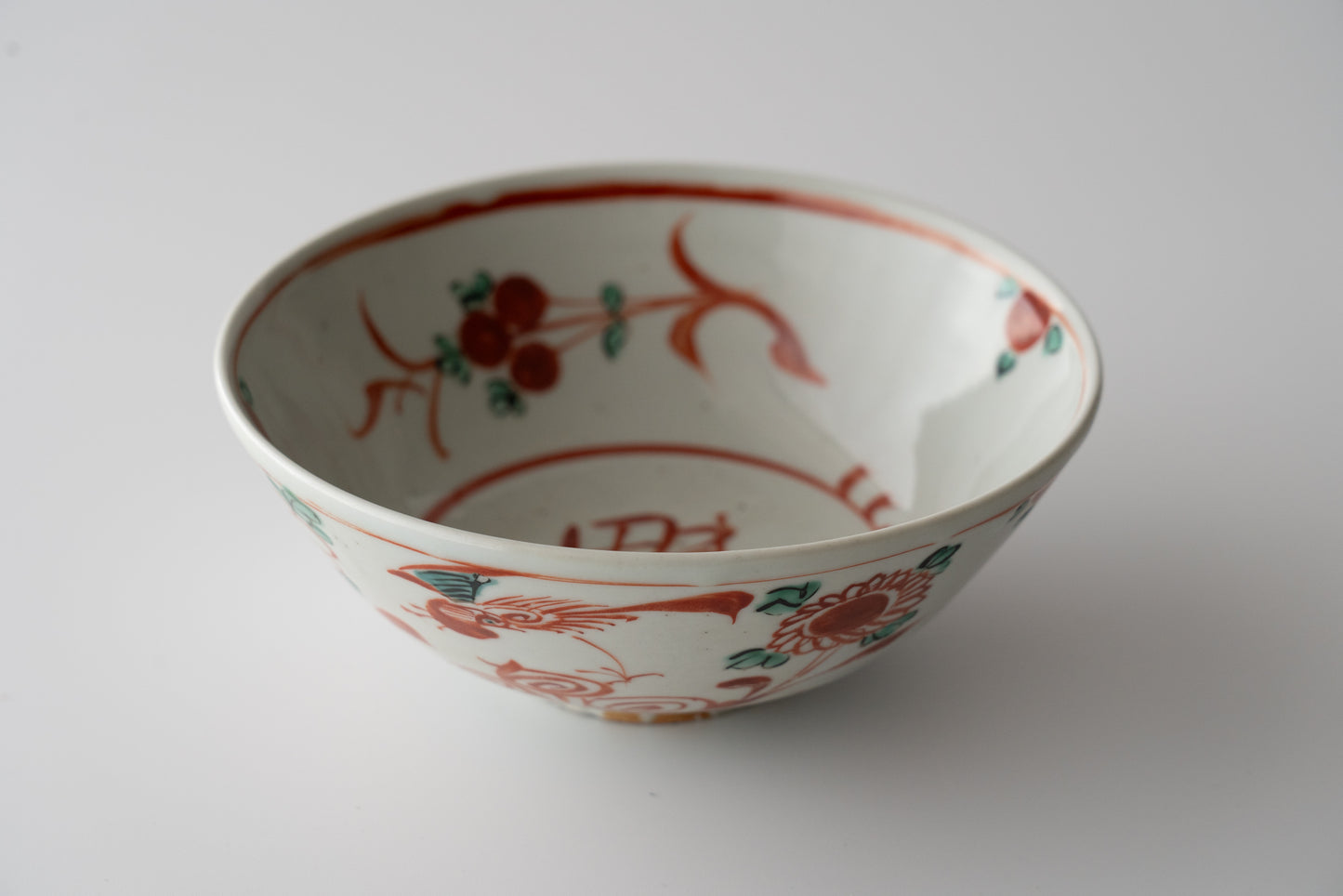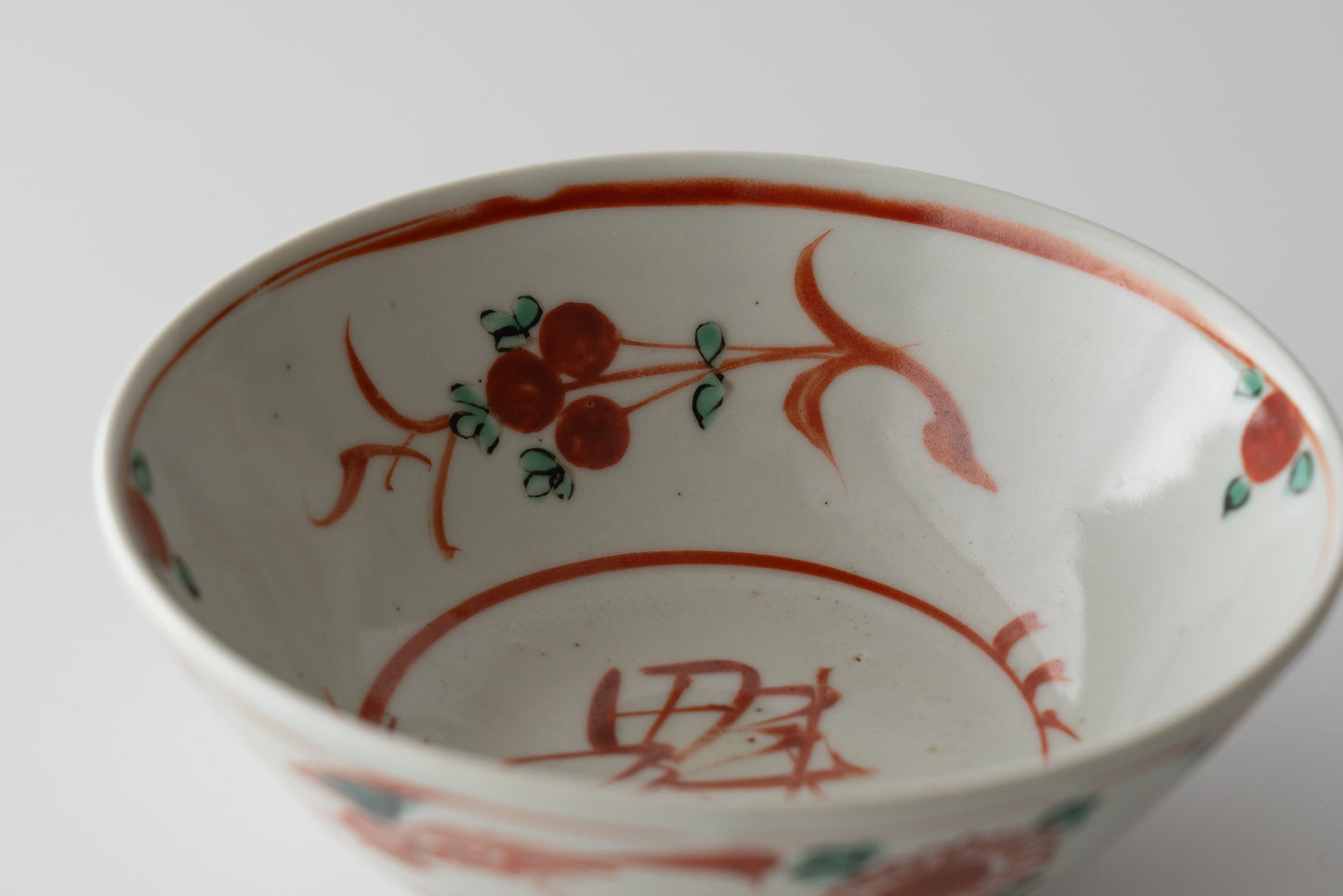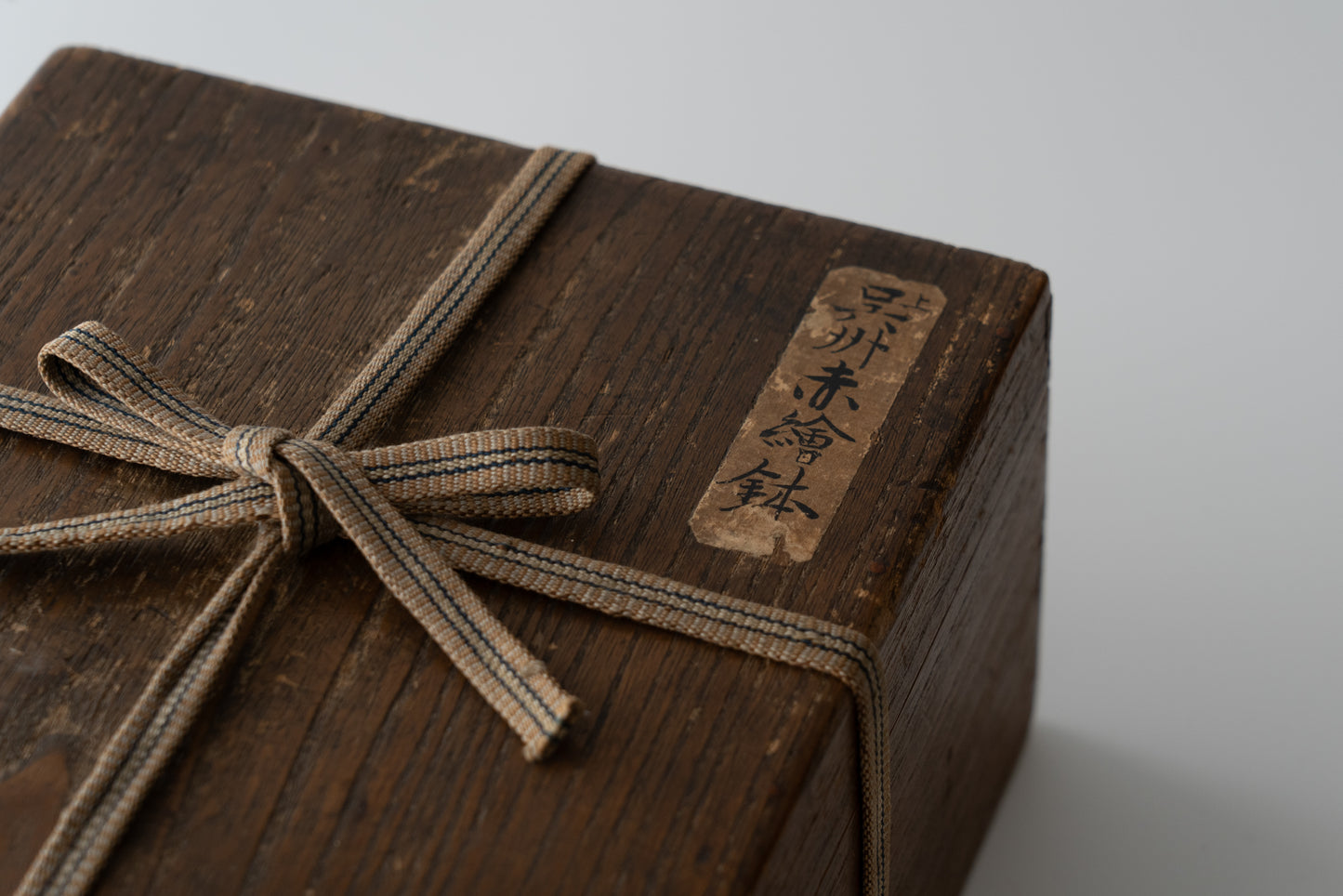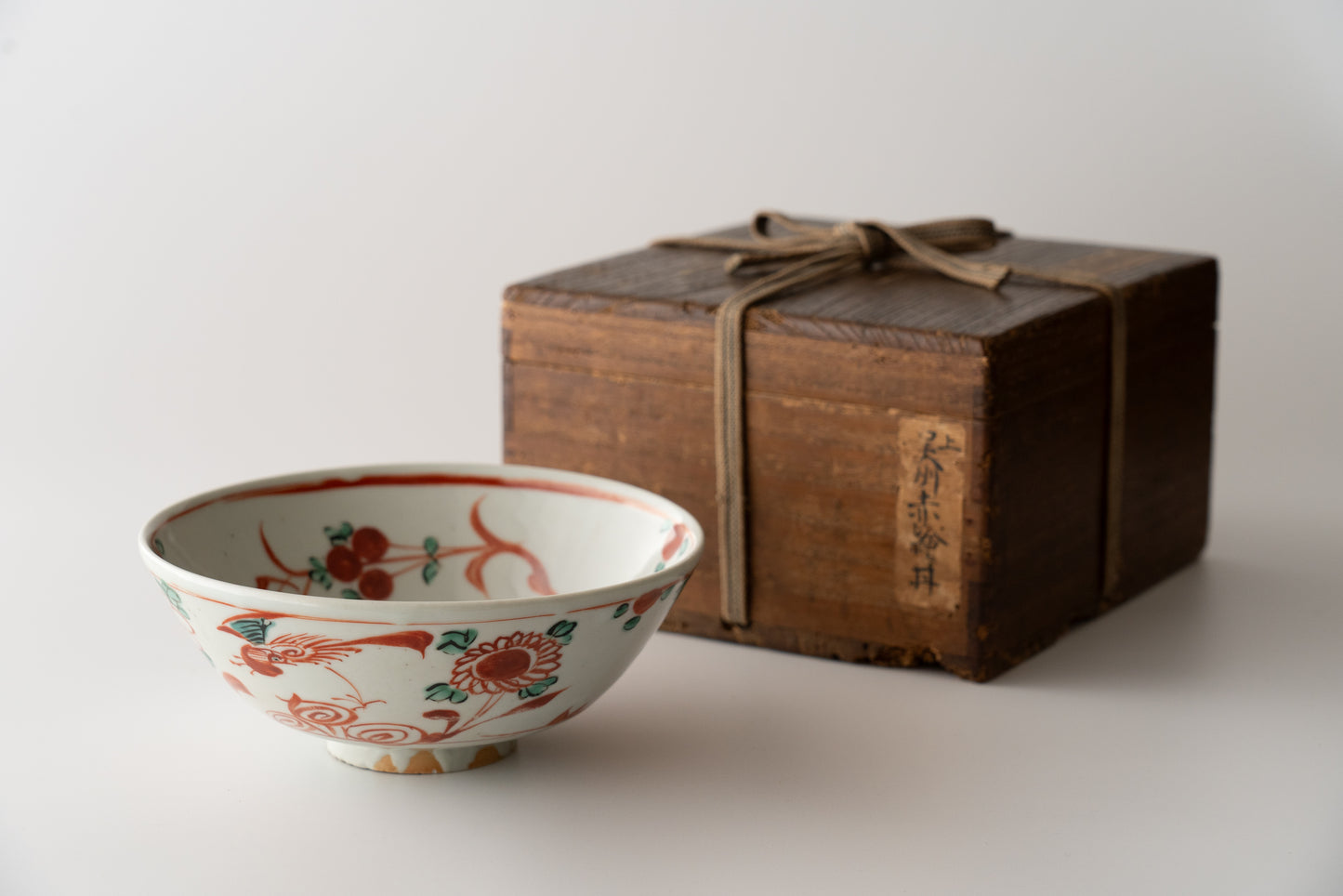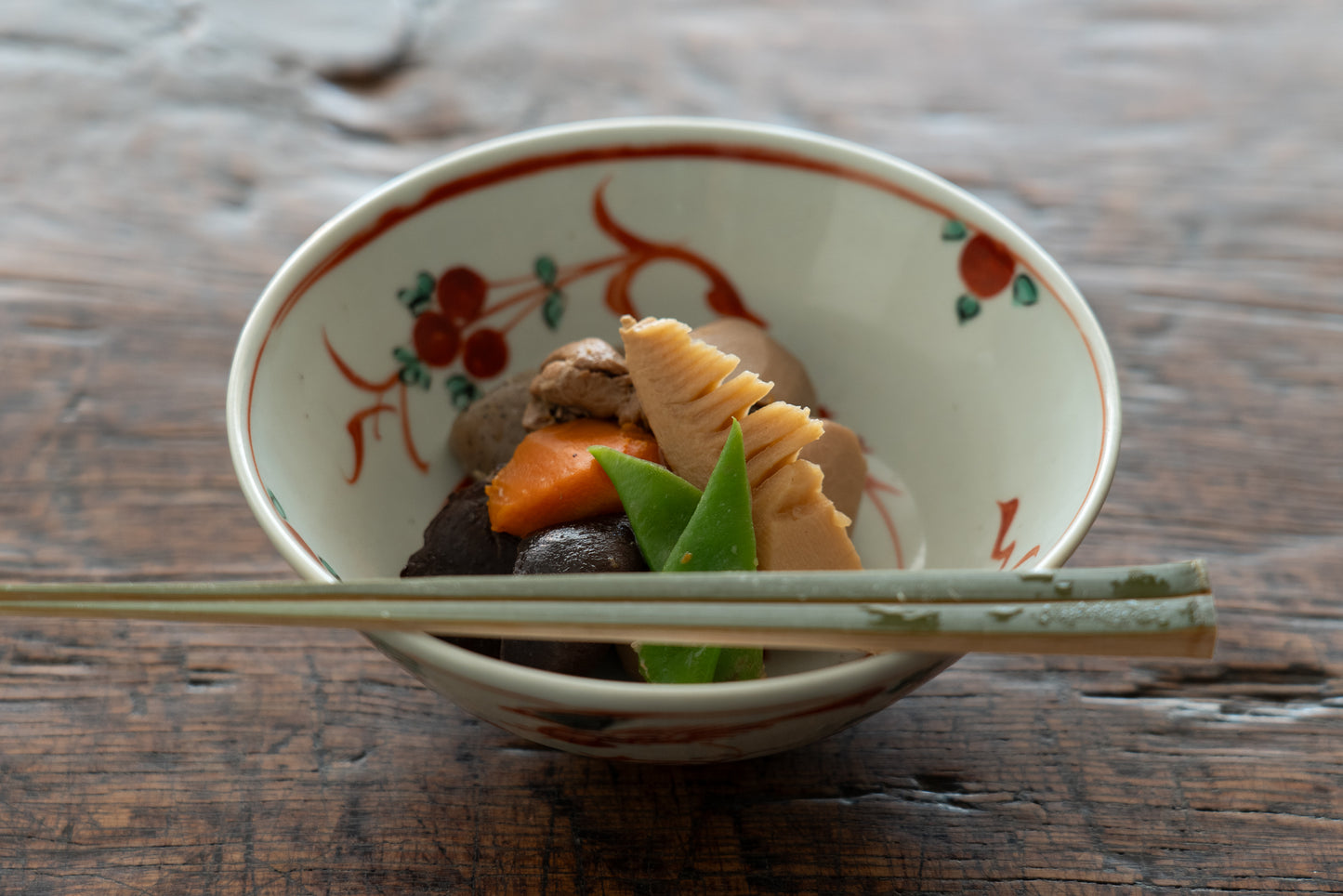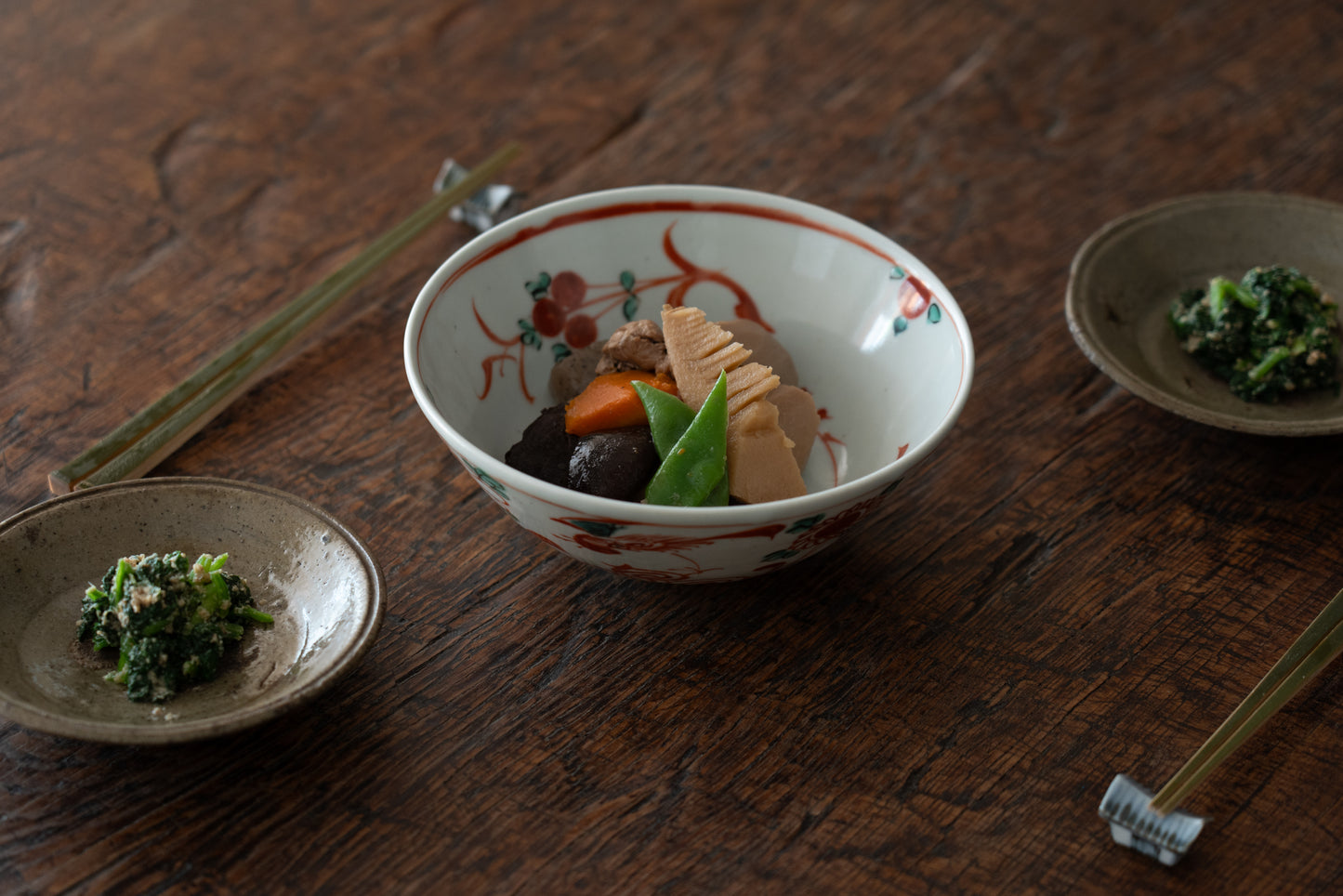Swatow ware bowl with Chinese character "魁"
- Region/Era Fujian Province, China / Late Ming Dynasty, 17th century
- Size H6.8×W17.0×D17.0cm
- Condition Good
- Accessory paulownia box
- No. 42nk-099
Wuzhou Akae refers to colored porcelain for export made in Zhangzhou kilns in Fujian Province, China from the end of the Ming dynasty to the beginning of the Qing dynasty.
Zhangzhou kilns produced a large amount of blue-and-white porcelain and five-color porcelain that imitated the products of Jingdezhen kilns, and these were widely exported all over the world, including to Japan, Southeast Asia, Western Asia, and Europe.

(Source: https://www.moco.or.jp/intro/map/Osaka_Museum_of_Oriental_Ceramics )
Its greatest feature is the free-spirited and free-flowing painting. The gorgeous colors and free expression unique to Akae ware have been especially loved and treasured by Japanese tea masters. The term "Goshu Akae" is unique to Japan. So many people have become familiar with the charm of Gosu Akae ware that it has been branded as a unique term.

Among the many Goshu Akae wares that were brought to Japan from the Momoyama period to the beginning of the Edo period, one of the most highly regarded pieces is a piece with the single character "Sakigake" written in bold brushstrokes in the center.
These bowls, commonly known as "sakigakede," along with the Tamatorijishi design, have been highly valued and given special treatment at tea ceremonies as kaiseki utensils and confectionery dishes.

If you look closely, you may have noticed that there is no comma on the first stroke of "魁".
"Sakigake" means first, leader, top in the imperial examination, etc. The first stroke is further combined with the meaning of "to take", which makes it auspicious. This high auspiciousness and humor may be one of the reasons why it was loved by so many people.

The inside of the leading character is decorated with floral patterns, while the outside features abstracted bird and chrysanthemum patterns painted in red with a touch of green glaze.
The base is a white glaze that has a strong tendency to devitrify. Most Goshu akae white porcelain is finished in a gray to off-white color. While there are quite a few pieces that are almost entirely gray, this piece, with its subdued gray color, can be said to be of good quality. The white color is bright, and the akae and blue-and-white patterns stand out well.

There is a very thin 3cm mark on the edge. It is so thin that it cannot be seen in the photo, and it does not reach the back side, so we do not consider it a scratch, but we will mention it just to be safe.

It is stored in an old paulownia wood box, showing its long history. The inscription reads "Kamigoshu Akae."
The simple and powerful design of Goshu Akae ware is its defining feature. The current market price is not that high, but that is why it is so nice to be able to find attractive pieces. They shine especially when used as tableware for cooking and tea ceremonies.
To pick up and see the actual item in the gallery.
Reservation
